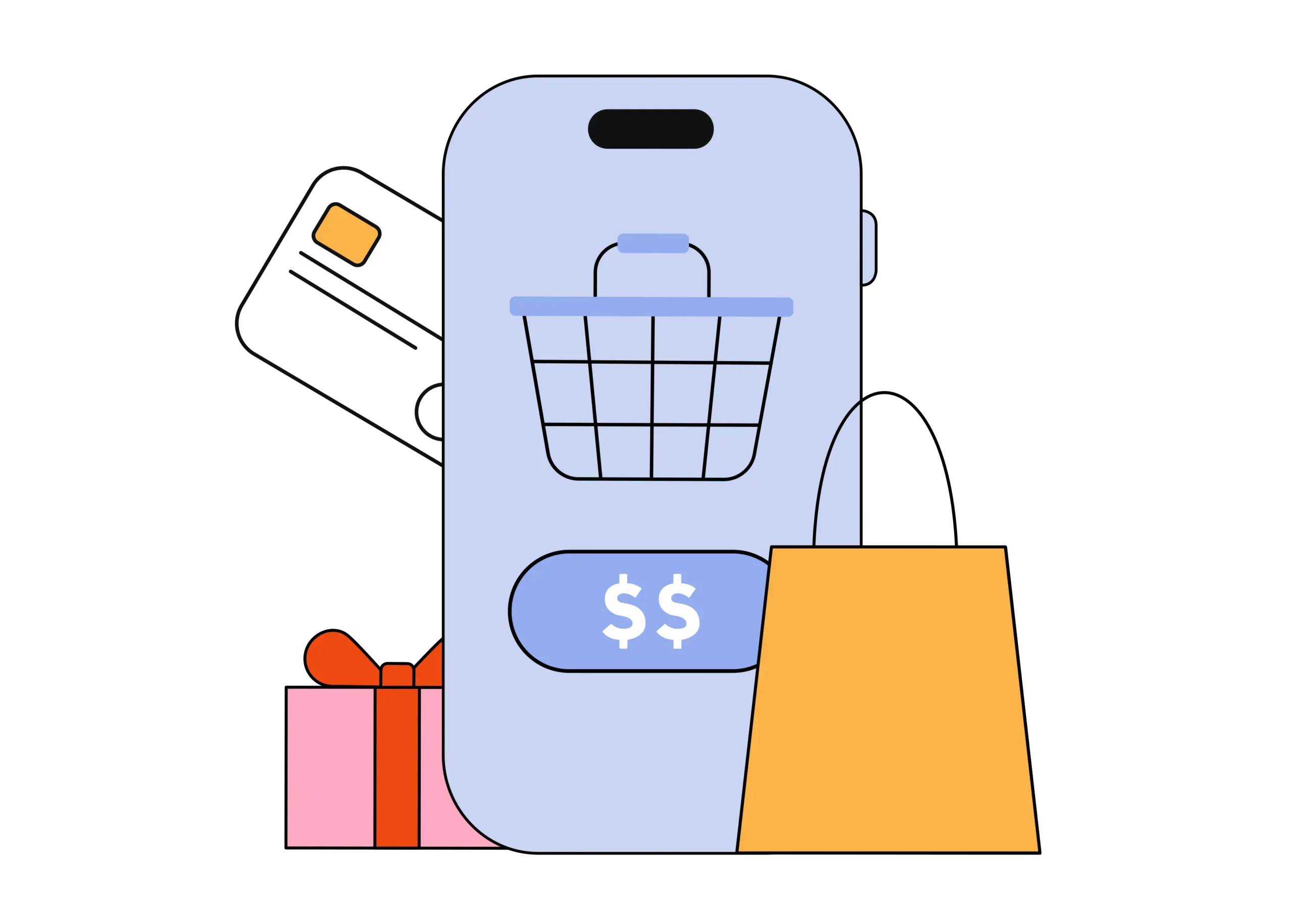Whether selling online, in person, or through an app, you need a reliable payment solution to capture sales and grow your business. The enormous economic engine of United States card spending is projected to hit over $15 trillion in 2027.[1]Nilson Report. “Issue 1252.” Accessed July 23, 2025. There’s real money on the table, and your payment solution should scoop up your share of the pie in a fast, secure, and frictionless way. But as soon as you start exploring payment solutions, you’re hit with confusing terminology — payment facilitators, payment gateways, processors, acquirers. It’s overwhelming.
This guide breaks down two common terms: payment facilitator and payment gateway. You’ll learn what each does, how they work together, and which model fits your business best.
Key Takeaways
- Payment gateways securely transmit cardholder data between your website and financial institutions. They’re the secure bridge between your checkout and the bank.
- Payment facilitators (PayFacs) act as master merchant accounts, onboarding smaller businesses (sub-merchants) to process payments quickly without requiring individual merchant accounts.
- Most PayFacs rely on payment gateways in their infrastructure. The two often work hand in hand within a technology stack.
- Your choice between payment facilitator or payment gateway depends on your industry, size, risk profile, and long-term goals. High-risk businesses often require specialized gateway setups.
What Is a Payment Gateway and How Does It Work?

A payment gateway encrypts and transmits payment data during a transaction. When a customer enters their credit card information, the gateway routes those details securely through card networks for authorization. Funds from approved transactions go to your merchant account. For high-risk businesses in particular, payment gateways offer customizable features like age verification, advanced fraud filters, and location-based controls while maintaining PCI compliance.

Gateway Types
Businesses can choose between two payment gateway types based on their technical needs:
- Hosted gateways redirect customers to a separate payment page. Because businesses never touch card data, these reduce your PCI burden, yet limit your control over the checkout experience.
- Integrated gateways keep customers on your site throughout the purchasing process. These allow for full branding and user flow control but require more effort to stay secure and ensure PCI compliance.
What Is a Payment Facilitator (PayFac) and Who Needs One?

Payment facilitators (PayFacs) simplify payment acceptance by allowing businesses to operate as sub-merchants under a shared master account. Instead of going through underwriting for an individual merchant account, you can fill out an application and start accepting payments almost immediately. When you sign up with a PayFac, you’re basically renting space under their merchant account umbrella. You don’t get complete control over payment infrastructure, but you do get speed, simplicity, and minimal setup.
However, PayFacs are built for low-risk, low-volume businesses. If your operation triggers automated red flags — for example, high sales volume, international buyers, or too many disputes — your account can be frozen or shut down without warning.

PayFacs as Revenue Generators
With global payment processing revenues expected to hit $3.1 trillion by 2028, many SaaS, ISVs, and platform companies embed payment services directly into their software to create new revenue streams.[2]McKinsey & Company. “Global Payments in 2024: Simpler Interfaces, Complex Reality.” Accessed July 23, 2025.
Consider a spa management platform. Instead of sending users to third-party tools for deposits and final charges, the platform can embed payments directly into the user flow. Customers book online, pay deposits instantly, and complete payments after their massage without staff fumbling between apps.
In this example, an ISV (Independent Software Vendor) can build a platform that handles everything seamlessly in one place, from appointment management to eCommerce payment processing, and earn a cut of every transaction. The ISV turns payment friction into profit while solving real operational pain points.
For platforms like this, PayFac-as-a-Service (PFaaS) enables embedded payments without building infrastructure from scratch.
Payment Facilitator vs Payment Gateway: Which Handles What — and Why It Matters
Payment facilitators and payment gateways aren’t necessarily competing solutions, as they often work together. Most PayFacs use a gateway behind the scenes within their payment tech stack to transmit card data. The key is knowing how much control and flexibility you want to access in your payment solution.
Below is our PayFac versus gateway comparison chart to help you understand the amount of control and flexibility each option offers.
| Payment Facilitators | Payment Gateways | |
| Merchant Account | Funnel all sub-merchant payments through one master merchant account. Businesses don’t need individual merchant accounts. | Work alongside individual merchant accounts. Each business needs its own merchant account to receive approved transaction funds. |
| Onboarding and Setup | Same-day approval, sometimes instant. Fill out basic forms, agree to standard terms, and start selling. Follow their rules, risk thresholds, and processing limits. | Gateway integration is quick, but merchant account approval can take longer. Requires business financials, processing history, and bank statements. Acquiring bank underwrites your specific business for tailored terms. |
| Control and Customization | Minimal control. Standard checkout pages, preset fraud rules, fixed deposit schedules. No custom decline codes, settlement currencies, or seasonal fraud filter adjustments. | Nearly unlimited customization. Custom checkout flows, digital wallets, tailored fraud rules, multi-currency processing, existing tool integration, and APIs for exact needs. |
| Fees and Costs | Simple but higher pricing. Expect a 2.9% + $0.30 per transaction baseline plus additional costs, including currency conversion, payout fees, chargeback fees, rolling reserves, account closure fees. | Complex but often lower at scale. Gateway fees can be $25 per month plus $0.10 to $0.25 per transaction, with processing rates around 1.5% to 2.5% per transaction. |
| High-Risk Industries | Usually reject high-risk businesses to protect master accounts. Even initial approvals face sudden termination from automated risk algorithms. | Provide necessary security features and industry-specific solutions. Offer customizable fraud rules and compliance measures for high-risk merchants. |
How To Choose Between a Payment Gateway and a PayFac Based on Your Business Model
The right choice between PayFac versus payment gateway options depends on your business type, technical capacity, and risk level.

Ideal Business Profiles for PayFacs
- Side Hustles & Solopreneurs: Businesses selling under $5,000 of goods monthly. With small businesses representing 99.9% of all United States businesses, PayFacs provide instant setup for this massive market segment.[3]U.S. Chamber of Commerce. “The State of Small Business Now.” Accessed July 23, 2025.
- Pop-Ups and Seasonal Vendors: Food trucks, seasonal vendors, and other event-driven businesses that need immediate payments without long-term commitments.
- Startups: New ventures entering the minimum viable product (MVP) validation phase focused on product-market fit, not payment infrastructure.
- Micro-SaaS: Software-based businesses that service 50 customers at $20/month have low transaction volume and simple pricing needs.

Ideal Business Profiles for Payment Gateways
- Scaling eCommerce Business: Growing operations processing over $50,000 in monthly transaction volumes may look to reduce transaction costs, need custom fraud rules, or benefit from specific payment gateway types.
- High-Risk Merchants: Business models that make PayFacs nervous — vape products, dating sites, etc. — can benefit from payment solutions tailored to industry-specific needs.
- Platforms, Marketplaces, and Software: Creating marketplaces or SaaS platforms requiring APIs, webhooks, and complex payment flows across user accounts.
- Global Sellers: Support for multiple currencies, various payment methods, and region-specific regulations can exceed PayFac capabilities.
- Subscription Business: Recurring billing complexities require billing logic, dunning management, and account automation.
Find the Right Fit: A Payment Solution That Scales With Your Business
When comparing your payment facilitator versus payment gateway options, it’s easy to go with what’s fast. But PayFac simplicity can come at a cost. Fixed fees can eat into margins. Lack of flexibility can limit growth. And high-risk flags can freeze your revenue when you need it most.
At PaymentCloud, we help businesses choose scalable payment solutions. Whether you’re launching your first product, navigating high-risk challenges, or building a marketplace with embedded payments, we offer the support and infrastructure you won’t get from one-size-fits-all platforms.
We specialize in helping businesses other providers avoid — high-risk, high-volume, or high-complexity — and offer customizable payment gateway solutions to fit your goals.
PayFac vs Payment Gateway FAQs
Can a business use both a payment gateway and a payment facilitator?
Yes. Most payment facilitators already use payment gateways within their infrastructure. Businesses often start with facilitators for simplicity, but some transition to dedicated gateways as they grow.
Are payment facilitators suitable for high-risk industries?
Generally, no. Most PayFacs avoid high-risk industries. Even if you’re initially approved, high-risk businesses remain vulnerable to sudden holds or closures from risk algorithms.
Are there limitations on transaction volume or size for merchants using payment facilitators?
Yes. Most PayFacs impose per-transaction limits and monthly caps. Hitting ceilings can trigger holds, reviews, or account closure. Unusual patterns like transaction size spikes or volume increases often prompt automatic reviews, potentially freezing funds for weeks.




